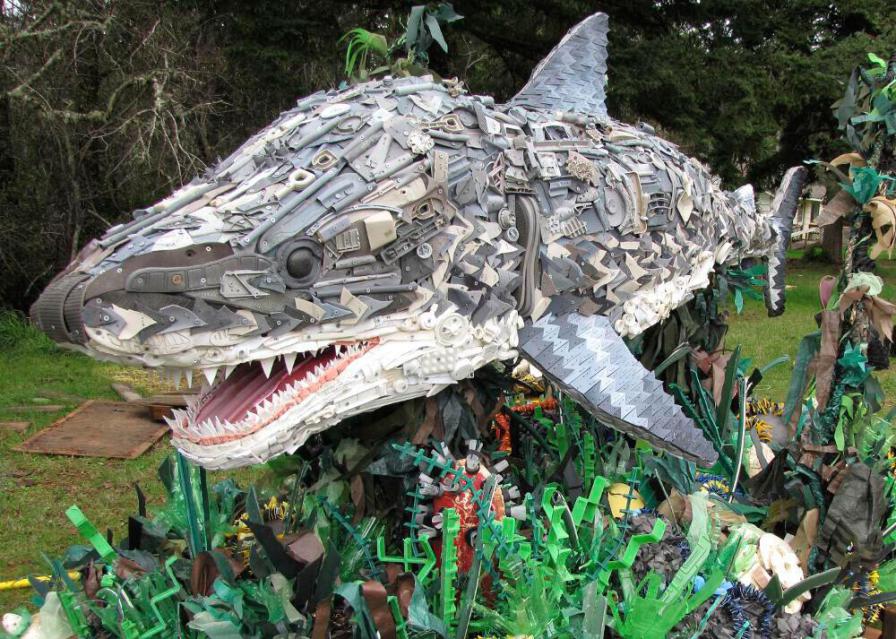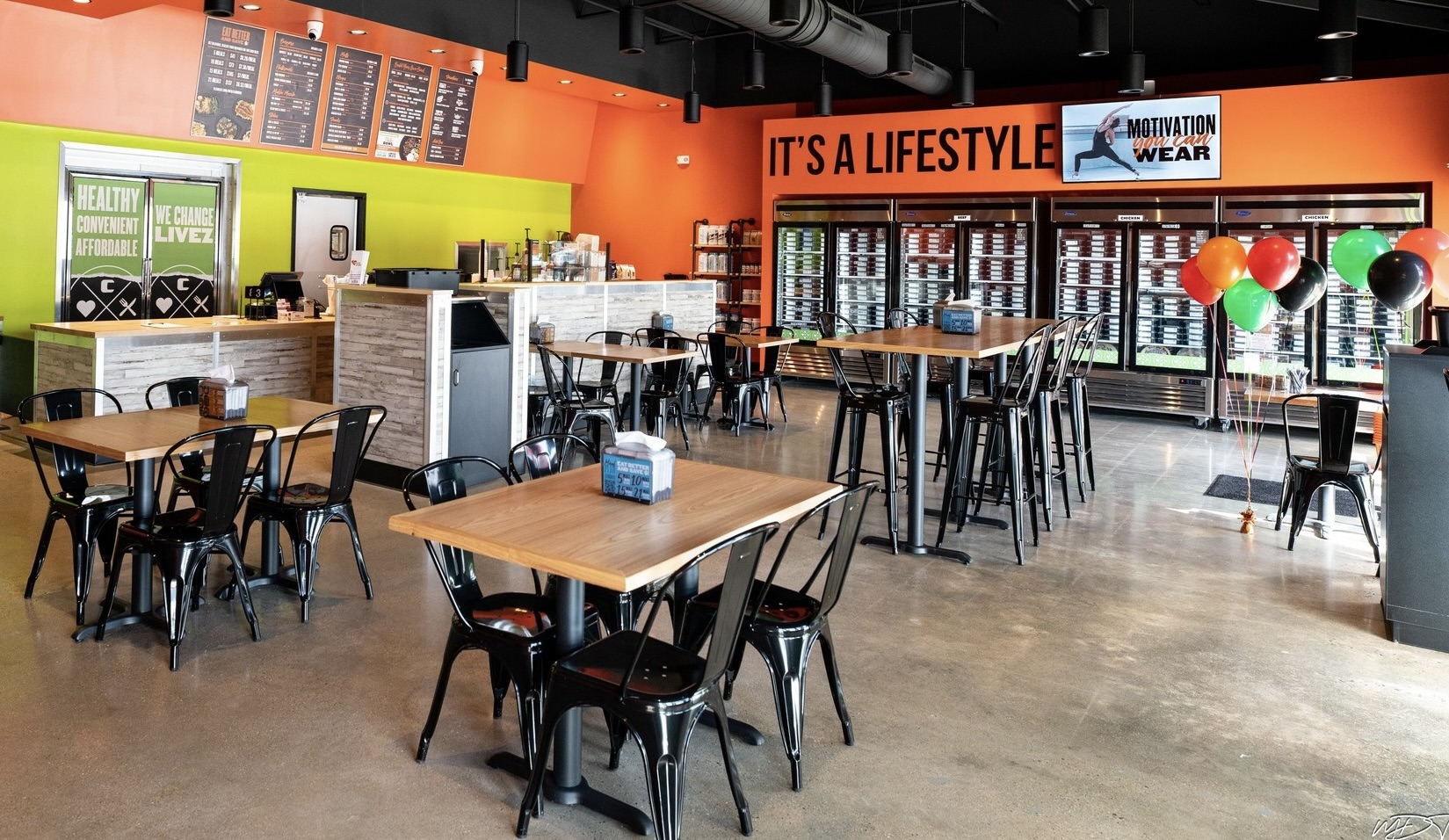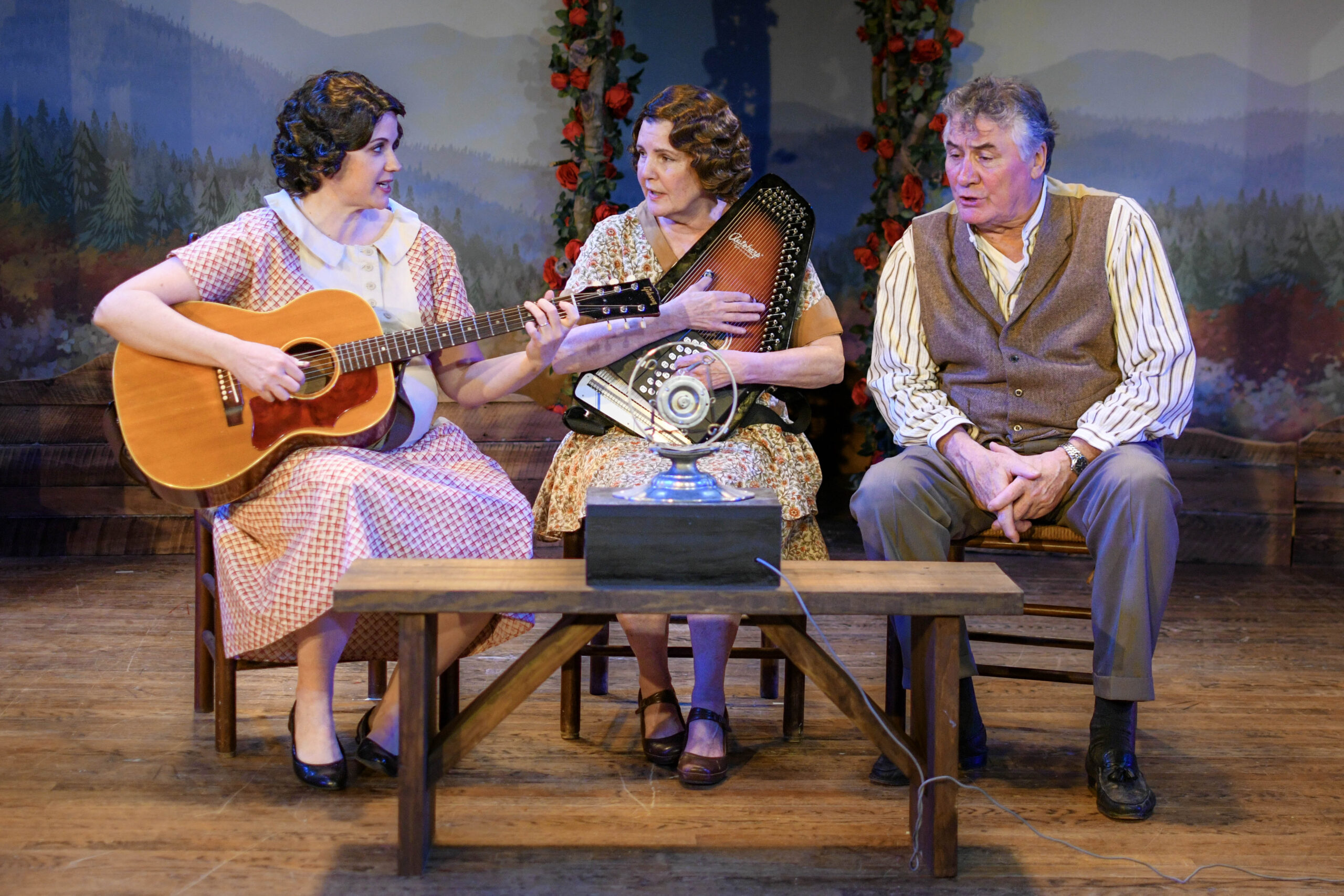A large model of a whale’s rib cage greets guests at the entrance to Washed Ashore: Art to Save the Sea, the latest art exhibit at the Science Museum of Virginia. All of the walls in the exhibit display colorful recycled collages and sculptures. Next to each is a plaque explaining the significance of the piece and a list of things to try and spy: tennis balls, toothbrushes, bits of plastic chairs, and broken and discarded toys. Children at the exhibit take turns calling out what they can spot in each sculpture. Styrofoam figures stretch along the walls; one section is shaped like a drum set and has two sticks on top for kids to play the instrument. Underneath a net, Chihuly-esque jellyfish drape from the ceiling, made from water bottles and an array of plastic parts.
Visitors can walk through and touch the eye-catching creations in Washed Ashore. The entire set-up activates the imagination, and it’s easy to pretend you are a world-renowned scuba-diver sent on a special expedition. A mosaic type artwork depicts an oceanic scene with a Starry Night vibe, and a fish made of shoe parts looks angry about the flip-flop you lost to the sea two summers ago that washed up on a distant beach. A bulletin board of masks hangs toward the end of the wide hall; it’s a collection created by several different artists called Plastic Tribe.
 Created entirely from plastic pollution recovered from the oceans, this impactful display includes a dozen large marine wildlife sculptures – from jellyfish to eels. The non-profit project, Washed Ashore, was launched in 2010, and since then, has had thousands of volunteers help collect raw materials – plastic cast-offs washed up on beaches – and make masterpieces like the ones on display at the Science Museum of Virginia.
Created entirely from plastic pollution recovered from the oceans, this impactful display includes a dozen large marine wildlife sculptures – from jellyfish to eels. The non-profit project, Washed Ashore, was launched in 2010, and since then, has had thousands of volunteers help collect raw materials – plastic cast-offs washed up on beaches – and make masterpieces like the ones on display at the Science Museum of Virginia.
Washed Ashore encourages reflection and conservation, inspiring us all to reduce, reuse, repurpose, and recycle. The overarching message is clear: Keep plastic out of the ocean. On a day-to-day basis, it is hard to remember how everything affects the environment. The things you learn as a young kid about conserving energy can slip to the back of your mind. This exhibit gives families an opportunity to talk about how people impact the environment – kids can come learn, and adults can come and be reminded. Although it’s a disheartening subject, it teaches and shows cause and effect without overwhelming anyone into the existential crisis of “Wow, how are we going to fix this?” The concept of human impact on the environment is large and complicated, but Washed Ashore breaks it down so even toddlers can understand, while not muting the severity of pollution. It touches on being a good consumer along with reusing everyday items.
With such a variety of work, the display combines science and art for all ages. Visiting the Science Museum of Virginia is an afternoon well-spent (especially for hot summer days!). Be sure to spend some time taking in Washed Ashore: Art to Save the Sea.
Part of regular museum admission, Washed Ashore: Art to Save the Sea runs through September 4 at the Science Museum of Virginia. Learn more about this specific project and volunteering at washedashore.org. For hours and prices, visit Science Museum of Virginia.







